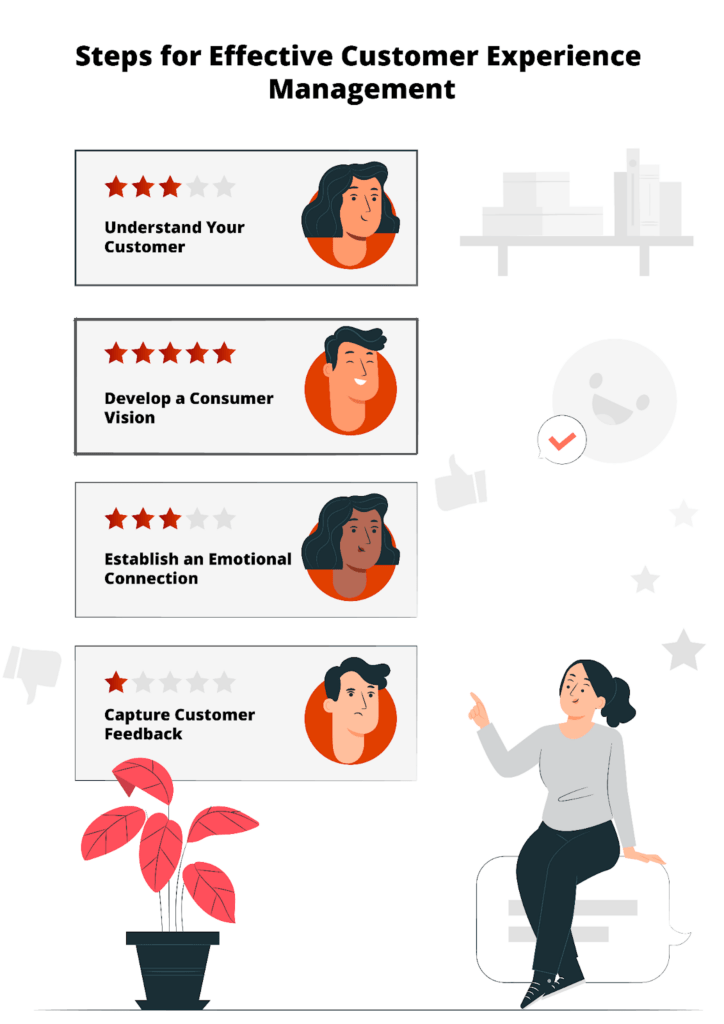In today’s increasingly competitive industry, understanding your consumers is important to success.
This is where digital customer experience analytics comes in.
Customer experience (CX) is a crucial component of modern company strategy. It contributes in the improvement of customer retention rates, the effective focus on high-impact clients, and the continuous refining of offerings. Creating a world-class CX strategy is definitely worth your time commitment!
While customer expectations have risen to new heights, seamless interactions, personalized services, and quick solutions are essential. To remain competitive in the market, businesses are looking for innovative solutions that meet changing customer needs.
This is where software plays an important role.
The right software can significantly boost customer satisfaction, client loyalty, and overall business performance.
Now Let’s Understand the impact of Customer Experience
Customer experience (CX) has emerged as a critical differentiator for organizations of all sizes. It includes every interaction a customer has with a brand, from brand awareness through post-purchase support. An appealing customer experience not only affects recommendations and reviews, which can have a substantial impact on a company’s reputation.
Customer experience management, which we’ll discuss in a moment, is also important. However, before delving into it, let us first become acquainted with the challenges connected with providing an excellent customer experience.
Challenges in Delivering Exceptional Customer Experience
Delivering an exceptional customer experience is not without its difficulties. Among these difficulties are:
- Data Management:
With an increase of consumer data from a variety of sources, managing and analyzing this data to generate useful insights can be difficult.
- Personalization:
Customers want personalized experiences that respond to their individual requirements and interests. This can be difficult to achieve on a large scale.
- Omnichannel Engagement:
Customers connect with businesses through a variety of channels, including websites, social media, mobile applications, and others. It is critical to ensure a consistent experience across all platforms.
- Real-time Responsiveness:
Customers demand quick responses to their queries and concerns. Manual processes can hinder timely interactions.
- Proactive Support:
Anticipating client demands and fixing issues before they develop is difficult without the correct tools.
Leveraging Digital Customer Experience Analytics through Software Solutions
These issues can be addressed and transformed by the right software solutions:
- CRM (Customer Relationship Management) Software:
CRM solutions centralized customer data, allowing organizations to better understand their customers. This data can be utilized to adjust interactions and services to individual preferences.
- Data Analytics Platforms:
Advanced analytics platforms aid in the extraction of insights from massive amounts of data. This information can help businesses make better decisions and forecast customer behavior.
- Marketing Automation Software:
Marketing automation automates personalized communication across several platforms, resulting in consistent message and timely engagement.
- Chatbots and artificial intelligence-powered customer service:
AI-powered chatbots respond instantly to client enquiries and provide service 24 hours a day, seven days a week. They can also help in problem solving and increasing client satisfaction.
- Customer Journey Mapping Software:
Visualizing the customer journey aids in the identification of bottlenecks and places where software can enhance interactions.
- Integration Platforms:
Integration platforms consolidate data and processes across systems, providing seamless operations and uniform experiences.
By this point, you might be wondering what the difference between Customer Experience and Customer Service is?
Well a simple answer would be they aren’t same
Customer Experience – The sum of a customer’s interactions with your organization is referred to as CX.
Customer Service – CS explicitly refers to the process of assisting customers in resolving their requirements and difficulties, frequently after the problem has already happened.
However, CS to be a component of a larger CX experience.
Now let’s get into Customer Experience management
Customer Experience Management (CXM) refers to the methods used by an organization to monitor, manage, and plan each interaction between a customer and the organization over the course of the customer lifecycle.
Core Processes of Customer Experience Management
- Customer Journey mapping:
A customer journey is made up of all the direct and indirect touchpoints that a customer has with a business throughout time, beginning with first awareness or discovery of its product or service and ending in a cycle of long-term engagement and repeat transactions.
- Moments of truth:
Moments of truth, also known as pain points, are important touchpoints in the customer experience.
In customer experience, a “moment of truth” is a vital and defining engagement between a customer and an organization that has a substantial impact on the consumer’s perspective, satisfaction, and entire journey with the organization. These moments might be positive, negative, or neutral, but they have the potential to shape long-term consumer connections and have an influence on the organization’s reputation.
- KPI Measurement and Analysis:
Monitoring Key Performance Indicators (KPIs) such as Customer Satisfaction (CSAT), Net Promoter Score (NPS), and Customer Lifetime Value (CLV) measures the effectiveness of CX activities. Analyzing these data enables organizations to assess their effect and fine-tune their plans.
- Voice of Customer (VoC):
The term “voice of the customer” refers to the cumulative image of your consumers’ expectations, preferences, dislikes, and comments over time. A VoC program gathers, evaluates, and analyzes this data to aid in strategic decision-making.
Let’s now get into the Process for Creating a Positive Customer Experience Management:
CXM requires a 360-degree picture of customers, as well as integrated, up-to-date data on customer accounts. A effective customer experience requires four crucial steps:
- Understand your customer:
Understanding consumers’ demands and behaviors is the first stage in developing a customer strategy. Customer experience teams can create customer profiles to better understand how to sell to specific consumers. Then, depending on age, hobbies, and purchasing history, they can perform client segmentation.
- Develop a consumer vision:
Next, CX executives should design a customer journey map. A customer journey map aids in the identification of customer touchpoints and the prediction of how customers will engage with the product or service. client journey maps can frequently assist CX teams in increasing long-term client retention.
- Establish an emotional connection:
This entails developing a brand personality that elicits emotions and connections in a client and aids in the establishment of a relationship between the customer and the organization.
- Capture customer feedback:
It is critical to track client satisfaction in real time. Client feedback can help the organization in tracking client views, enabling quality monitoring, and determining the effectiveness of the customer experience plan.
Last Thought:
Customer experience can be a major distinction in a highly competitive corporate market. Companies with the correct software solutions can create personalized, efficient, and consistent experiences that delights consumers and promote loyalty. Businesses can revolutionize their customer experience and remain ahead of the competition by utilizing CRM systems, communication tools, customer care platforms, or data analytics.
Ready to take customer interactions to the next level?
‘SAP Customer Experience (CX) suite” leads the way. Want to learn more? Click here.
Have questions or seeking guidance?
Connect with KaarTech for any queries or suggestions on optimizing your customer experience journey.
FAQ’s
What is Customer Experience (CX)?
CX encompasses every interaction a customer has with a brand, influencing their satisfaction and reviews, thereby impacting a company’s reputation.
How Can Software Address CX Challenges?
Software solutions like CRM systems, data analytics platforms, and AI-powered chatbots help manage customer data, personalize interactions, and ensure consistent engagement.
What’s the Difference Between CX and Customer Service (CS)?
CX covers the entire customer journey, while CS specifically deals with resolving customer issues post-interaction, forming a part of the broader CX experience.
What’s the Role of Customer Experience Management (CXM)?
CXM focuses on understanding customer needs, mapping their journey, measuring KPIs, and capturing feedback to create positive, engaging experiences.
One Comment
Comments are closed.


I loved as much as you will receive carried out right here. The sketch is attractive, your authored material stylish. nonetheless, you command get got an impatience over that you wish be delivering the following. unwell unquestionably come more formerly again since exactly the same nearly a lot often inside case you shield this hike.